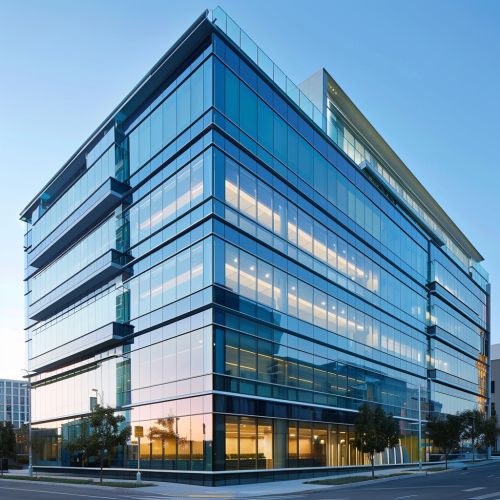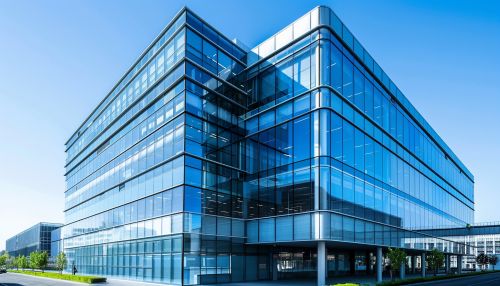Commercial building
Overview
A commercial building is a structure designed for the conduct of business activities. It is a type of real estate property that is leased to companies that conduct business. Commercial buildings include office buildings, warehouses, and retail buildings (e.g., convenience stores, 'big box' stores, and shopping malls). In urban locations, a commercial building often combines functions, such as offices on levels 2-10, with retail on floor 1. When space allocated to multiple functions is significant, these buildings can be called multi-use.
Types of Commercial Buildings
Commercial buildings can be categorized into several types based on their design, usage, and location.
Office Buildings
Office buildings are designed to provide workspaces for businesses. They are usually located in urban centers and can range from small-scale structures to towering skyscrapers. Office buildings can be further divided into Class A, B, or C based on their construction quality, location, and amenities.
Retail and Restaurant Buildings
Retail and restaurant buildings are structures designed to host businesses that sell goods or services directly to the consumer. They include shopping malls, department stores, and standalone restaurants.
Industrial Buildings
Industrial buildings are designed for industrial operations and include warehouses, factories, and distribution centers. They are typically located outside of urban centers, in areas with easy access to transportation infrastructure.
Multifamily Buildings
Multifamily buildings are a type of residential real estate that is rented out to tenants. Although not traditionally considered commercial property, they are included in this category because they are owned and operated as a business.
Design and Construction
The design and construction of a commercial building involve a complex process that includes site selection, design, construction, and maintenance.
Site Selection
The site selection process involves choosing a location for the building. Factors considered include the site's accessibility, its proximity to markets, and the availability of utilities and other infrastructure.
Design
The design of a commercial building involves creating a plan that meets the needs of the business while complying with local building codes and regulations. The design process often involves a team of professionals, including architects, engineers, and interior designers.
Construction
The construction of a commercial building involves a series of steps, including site preparation, foundation work, framing, installation of systems (such as electrical and plumbing), finishing, and landscaping.
Maintenance
Maintenance of a commercial building involves regular inspections and repairs to ensure the building remains safe and functional. This can include routine tasks such as cleaning and landscaping, as well as more complex tasks such as HVAC system maintenance and roof repairs.
Commercial Building Management
Commercial building management involves overseeing the day-to-day operations of a commercial building. This can include managing tenants, maintaining the building, and ensuring the building complies with laws and regulations.
Impact on the Environment
Commercial buildings have a significant impact on the environment, both through their construction and their operation. They are a major source of greenhouse gas emissions, and their construction can contribute to habitat destruction and pollution.
See Also
- Real Estate Development
- Real Estate Investment
- Building Code
- Architectural Design
- Construction Management


